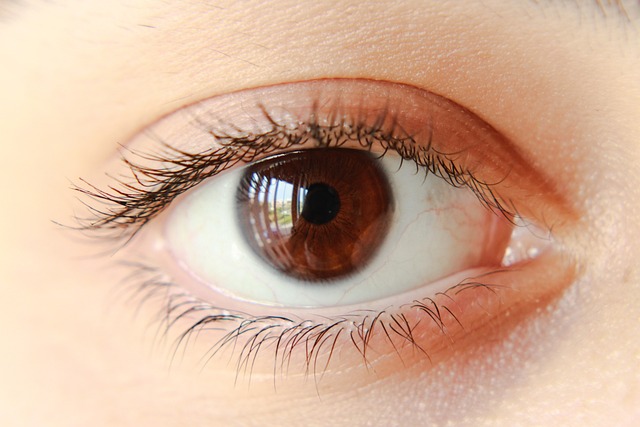Skin tags are small, harmless skin growths that often form in areas of friction and can range from a few millimeters to several centimeters. While generally painless and posing no health risks, they can sometimes cause discomfort or be a source of aesthetic concern. For those considering removal, understanding their nature is important as it can affect self-esteem and comfort. In Bristol, patients have access to professional skin tag removal services at dermatological clinics, with options for cryotherapy, surgical excision, and electrosurgical removal tailored to each individual's needs based on the size, location, and quantity of tags. Both NHS and private healthcare providers offer these procedures, ensuring safety and effectiveness with advanced techniques. The removal process is typically performed in a doctor's office or outpatient clinic using local anesthesia, followed by the chosen method. Post-procedure care is crucial for proper healing and to prevent complications; patients can expect some discomfort, which is manageable with over-the-counter pain relief. Healing times vary but are generally short, with a follow-up appointment recommended to ensure proper healing. Bristol tag removal is widely recognized as a safe and effective solution for managing skin tags.
Identifying and addressing skin tags is a common concern for adults. This article delves into the Bristol Tag Removal process, offering a comprehensive overview of what this entails. From understanding the nature of skin tags to navigating the removal procedure, readers will gain insightful knowledge on managing these benign growths effectively. The exploration covers both the clinical aspects of the treatment and the practical considerations for recovery, ensuring a well-rounded understanding of Bristol Tag Removal for adults seeking safe and efficient solutions.
- Understanding Skin Tags and Their Impact on Adults: An Overview of Bristol Tag Removal Procedures
- The Process of Bristol Tag Removal: What to Expect During and After the Procedure
Understanding Skin Tags and Their Impact on Adults: An Overview of Bristol Tag Removal Procedures

Skin tags, also known as acrochordons, are small, benign skin growths that can appear virtually anywhere on the body. They are commonly found where there is friction or rubbing from clothing, which suggests a connection to their development. In adults, these tags may range in size from a few millimeters to several centimeters and are typically harmless, although they can cause discomfort or cosmetic concerns. Understanding skin tags is the first step for adults considering removal. The presence of skin tags can impact one’s self-esteem and comfort, particularly if they are located in prominent areas.
In Bristol, tag removal procedures are conducted by trained medical professionals who specialize in dermatological surgeries. The most common methods include cryotherapy, where liquid nitrogen is used to freeze the base of the skin tag until it falls off; surgical excision, which involves cutting out the tag under local anesthesia; and electrosurgical removal, which uses electrical current to remove the tag. Bristol Tag Removal clinics utilize state-of-the-art techniques to ensure safety and efficacy. The choice of procedure depends on factors such as the size, location, and number of skin tags. Each method has its advantages and considerations, and a healthcare provider will discuss these with the patient to determine the most appropriate treatment plan. Adults in Bristol seeking removal have access to both NHS services and private clinics, offering a range of options tailored to individual needs.
The Process of Bristol Tag Removal: What to Expect During and After the Procedure

When considering the removal of skin tags, also known as Bristol tags, it’s crucial to understand the process and what to expect both during and after the procedure. The removal of skin tags is a common surgical procedure typically performed in a doctor’s office or outpatient clinic. The process begins with the application of a local anesthetic to ensure comfort throughout the procedure. Once numb, the healthcare provider will use one of several methods to remove the tag. This can involve cutting away the base with surgical instruments, tying it off with a suture to cut off circulation, or using cautery to burn it off. The chosen method depends on factors such as the size and location of the skin tag, as well as the patient’s overall health and preferences.
Post-procedure care is essential for optimal healing and minimizing complications. Immediately after removal, you may experience some discomfort, which can typically be managed with over-the-counter pain medication. The area will likely heal within a few days to a couple of weeks, depending on the individual’s healing process. It’s advisable to keep the area clean and dry, follow any specific postoperative instructions provided by your healthcare provider, and avoid activities that could cause injury or infection to the treated area. Regular monitoring for signs of infection, such as increased redness, swelling, or pus, is important, as is a follow-up visit with your healthcare provider to ensure proper healing has occurred. Bristol tag removal is a safe and effective way to address these benign growths, and with the right preparation and aftercare, you can expect a smooth recovery and clearer, smoother skin.
In conclusion, skin tags are a common benign growth that can affect adults, often leading to cosmetic concerns or discomfort. The Bristol Tag Removal procedure emerges as a safe and effective treatment option for those seeking removal. This article has outlined the key aspects of understanding skin tags’ impact on adults and detailed what one can expect from the Bristol Tag Removal process. It is clear that with proper medical guidance, this procedure offers a reliable solution for the removal of skin tags, ensuring improved appearance and comfort post-treatment. For individuals considering this option, it is advisable to consult with a healthcare provider who specializes in dermatological procedures to discuss the best course of action tailored to their specific needs.
